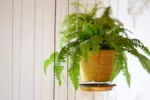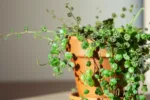Lantana seeds
Growing lantana from seeds is relatively straightforward. Here’s a simple guide to help you get started: rewrite the sentence.:
- Collecting Seeds:
- Wait for the green pods on your lantana plant to turn purple-black.
- Harvest the mature pods and collect the seeds.
- Place the seeds in a paper bag and let them dry in a cool, dry place.
- Sowing Seeds:
- Soak the seeds in lukewarm water for 24 hours to soften their seed coat.
- Fill small nursery pots with a soilless growing medium.
- Moisten the medium with water.
- Plant one or two lantana seeds per pot, covering them with about ⅛ inch of the medium.
- Place the pots in plastic bags to retain moisture.
- Keep the container at 70 to 75 degrees Fahrenheit until the seeds germinate (usually within 2 to 8 weeks)

Lantana care
Lantana (Lantana camara) is a resilient shrub with vibrant, multi-colored blooms. Here are some care tips for growing lantana:
- Sunlight: Lantana thrives in full sun. Make sure it receives plenty of sunlight for optimal growth and flowering.
- Soil: Plant lantana in well-draining soil that is slightly acidic to neutral. It can tolerate poor soil conditions but prefers good drainage.
- Watering: Keep the soil consistently moist during the first few weeks after planting. Once established, lantana is drought-tolerant and needs about an inch of water per week.
- Fertilization: Apply a balanced fertilizer once a year. If growing lantana in containers, you can fertilize monthly. Avoid excessive fertilization, as it may reduce blooming.
- Pruning: In regions where lantana overwinters, prune back dead wood in early spring to encourage new growth. Unpruned plants may become large, woody shrubs.
Why is Lantana a problem
Lantana can be a problem for two main reasons:
- Spreading: It grows fast and can crowd out other plants, especially in warm climates. This is bad for native plants and the overall health of the environment.
- Poisonous: All parts of the lantana plant are toxic if eaten, and can cause tummy troubles for people and pets.

Lantana poisonous
lantana is a pretty plant, but all its parts are poisonous! Leaves, flowers, berries – if you or your pet eat them, it can lead to puking, cramps, and belly aches. Especially bad for young kids and furry friends who like to munch on things. If that happens, see a doctor right away. Just to be safe, keep Lantana out of reach and enjoy its beauty from afar!
Lantana Plant Benefits
Lantana (Lantana camara) is a fascinating plant with both ornamental and medicinal properties. Let’s explore its benefits:
- Alleviates Skin Disorders: Lantana leaves have been traditionally used to soothe itching, redness, and skin infections.
- Good for Bones and Joints: Lantana is believed to support bone health and joint function.
- Astringent Properties: It acts as an astringent, helping to tighten tissues and reduce inflammation.
- Treats Cough: Lantana has been used to alleviate coughs, including whooping cough and chronic cough.
- Pain Relief: The plant may provide relief from pain and discomfort.
- Antioxidant Benefits: Lantana helps prevent free radical damage due to its antioxidant properties.
- Digestive Health: It can improve digestive system function.
- Respiratory Support: Lantana is used to address respiratory issues and protect against infections.
- Stomach Medicine: It has been employed as a remedy for stomach-related problems.
- Appetite Enhancement: Lantana may increase appetite.
- Detoxification: Detoxification aids in eliminating toxins from the body.
- Toothache Relief: Lantana has been used to treat toothaches.
- Repels Insects: The plant’s aroma acts as a natural insect repellent.
Lantana in Other Languages
- Spanish: Lantana
- French: Lantana
- Italian: Lantana
- German: Wandelröschen or Lantana
- Portuguese: Lantana
- Dutch: Wisselbloem or Lantana
- Swedish: Lantana
- Russian: Лантана (Lantana)
- Japanese: ランタナ (Rantana)
- Telugu: లంటానా (Lantānā)
- Tamil: லண்டானா (Laṇṭāṉā)
- Kannada: ಲಂಟಾನಾ (Laṇṭānā)
- Hindi: लंटाना (Laṇṭānā)


